Paligenesis, VCA’s tribute to Notre-Dame. A Gothic and Biomimetic Forest for the Cathedral,
Paris 2019.
Paris-based architect Vincent Callebaut proposes for Notre-Dame Cathedral a new roof that has an aquaponic farm and generates energy.
On April 15, 2019, Notre-Dame cathedral, which has been keeping watch on Christian and Western culture since the beginning of its construction eight centuries ago, nearly saw its end in the historic fire that devoured its roofs as we watched on in disbelief. Reflecting the all-spiritual splendor of our material and sacred heritage, this sublime lady has undoubtedly reminded us of the frailty of our life and our civilization.
What is more, this powerful fire has awakened our dystopian imagination and somewhat echoed the Church’s current identify crisis, as well as the environmental challenges we are facing through climate change.
Now, as we start thinking about Notre-Dame’s reconstruction, questions arise as to how we can architecturally summarize the human intelligence of our era and depict the prospects of Catholicism. More specifically: How can we write the contemporary history of our country, but also that of science, art and spirituality together? For it is hardly enough to reproduce the past as it used to be; we must project ourselves towards a desirable future, conveying to the world the thirst for transcendence that propels human beings.
Thus, we seek to present a transcendent project, a symbol of a resilient and ecological future that offers the city Paris a set of solutions inspired by biomimicry, defined here as a common ethic for a fairer symbiotic relationship between humans and nature.
Our Palingenesis project – in Greek παλιγγενεσία, meaning “rebirth”, “regeneration” – aims to assimilate the venerable stone nave, to blend in naturally as a vegetal graft harmonizing in one gesture – in one single curved stroke of pencil – the roof and the spire.
From the four gables, the original geometry of the 10 meter-high attic has been respected. As we move towards the transept cross, its triangular section and steep, 55-degrees pitched roofs gradually stretch to shape a vertical spire.
Thus, respecting the inherent principles of descent of the structural loads of the building towards the flying buttresses and the inner fasciculated pillars, the four roofing lines and the four lines of the roof’s ribs bend and join together in harmony towards the sky, producing a parametric and light geometry.
Constructed with cross laminated timber beams pre-stressed with carbon fiber slats , the new oak frame seeks to use the minimum amount of material to ensure a low-carbon footprint while offering the greatest transparency to the cathedral.
Transparency, sharing and openness to our society’s development: such are the ideas conveyed by this new, diaphanous forest of Notre-Dame, outlining the new face of the Church in the 21st century. A dynamic, agile and contemporary Church.
Its pure and elegant architecture invites us to elevate our spirituality and adopt a much-needed and overly altruistic and humanistic stance towards the world around us, with a view to its better preservation.
The four great hip rafters are oriented towards the cardinal points. Between the four ridges which give the roof its sophisticated character, their curves reincorporate one above the other the monumental, wrought-copper statues of the twelve apostles, and the tetramorphs symbolizing the evangelists. Fortunately, these sixteen statues, work of Adolphe-Victor Geoffroy-Dechaume, had been removed four days before the fire – i.e. on April 11, 2019 – for restoration.
The rooster located and found in the rubble the day after the disaster will crown the spire again; in this position, it should remain the “spiritual lightning rod” and protector of the faithful.
The new architecture of the spire, like a shroud raised from the keystone of the transept crossing, evokes the rebirth but also the mystery of the cathedral and the resurrection of Christ. And under the shroud, life and renewal emerge. Notre-Dame dazzles the world again while amplifying her universal message of peace and her spiritual aspiration.
The idea is use this new architectural “graft” to turn Notre-Dame into a positive energy building, designed to produce more energy than it consumes. Through energetic solidarity with the body of the historic monument, the contemporary, three-dimensional Gothic stained glass graft produces all the electricity, heat and passive ventilation that the cathedral might require, by combining passive systems and advanced renewable energies.
The new wooden frame is covered with a three-dimensional crystal glass dress subdivided into faceted diamond-shaped elements. These crystals consist of an organic active layer, made of carbon, hydrogen, nitrogen and oxygen, which absorbs light and transforms it into power. This energy, stored in hydrogen fuel cells, will be directly redistributed throughout the cathedral.
To avoid any greenhouse effect, these crystalline scales open at the bottom of the frame along the acroterion of the nave and transept, creating thereby a natural air flow towards the top of the spire which mimics a wind powered chimney. This natural ventilation, whose operation is akin to the interior of a termite mound, ensures excellent aeraulic performance.
Furthermore, this roof-spire in the cathedral attic provides a thermal buffer space, which accumulates hot air in winter to better isolate the cathedral, and vents with fresh air in the summer through the evapo-transpiration of plants.
Thus, the cathedral would become an exemplary eco-engineering structure and the Church a true pioneer in environmental resiliency.
source Vincent Callebaut

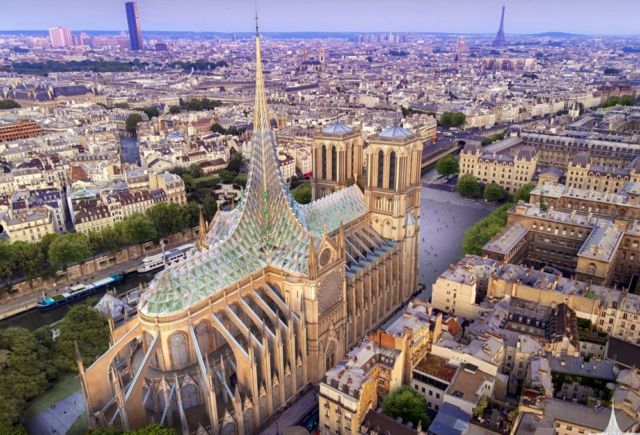
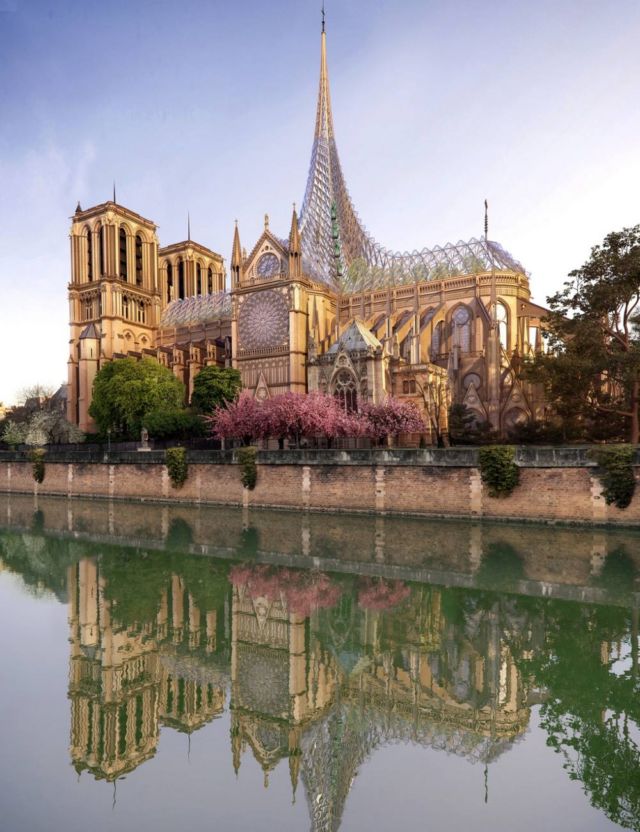
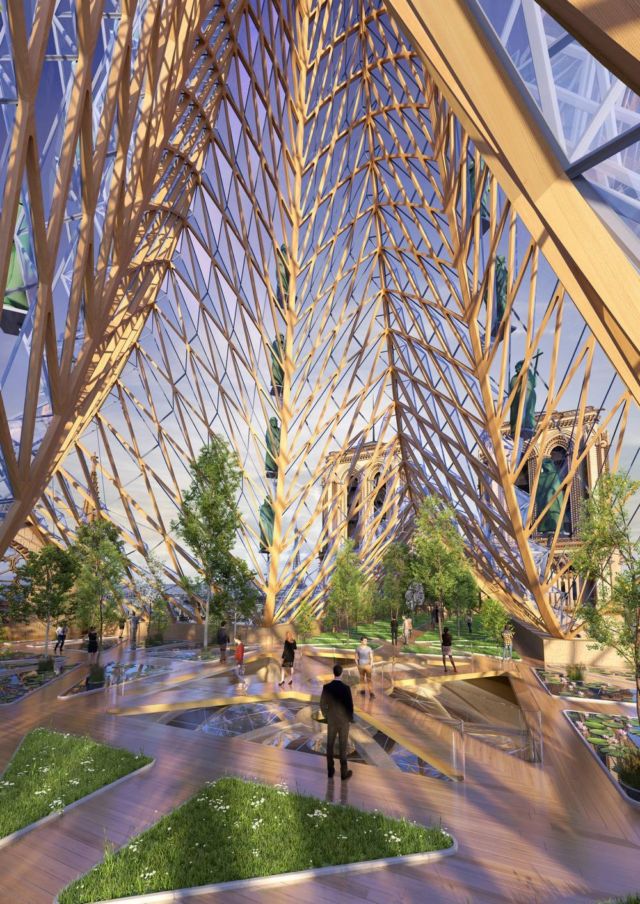
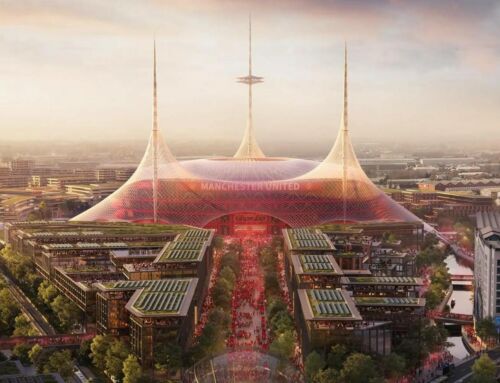
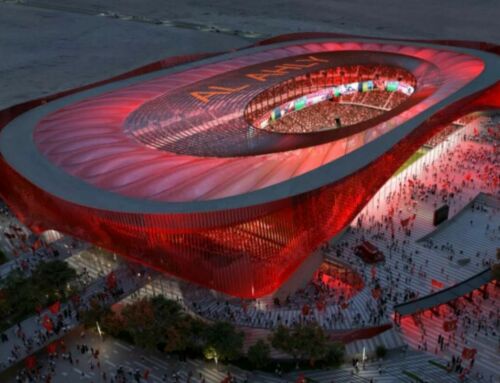
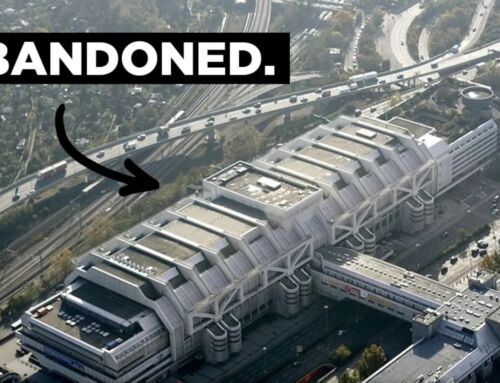
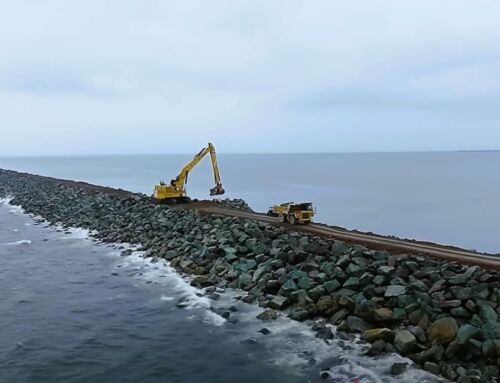
Leave A Comment